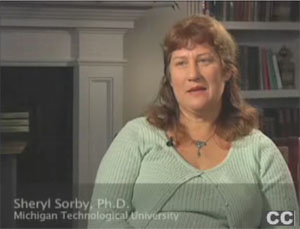Question/Answer: How Do We Improve Computer Science’s Image?
 See Wechie’s Comment of 8/21: There seems to be hundreds of separate initiatives to encourage girls to study computer science but there remains an image problem. How can we get an industry wide campaign going to improve the image of computing?
See Wechie’s Comment of 8/21: There seems to be hundreds of separate initiatives to encourage girls to study computer science but there remains an image problem. How can we get an industry wide campaign going to improve the image of computing?
Yes, Wechie you are correct, there is a huge image problem. American Association of University Women’s Study, Tech Savvy: Educating Girls in the New Computer Age (2000) which you can download for free, documents the image problem among girls and many other studies have gone on to replicate these findings.
I would like to see one of the major computer giants – such as Apple or Electronic Arts – use their marketing savvy and department to team with a nonprofit (such as us) to develop a multi-media marketing campaign (YouTube, facebook, TV commercials, Posters) that could create a more positive image of computer science for women and girls (and men!).
Of course, we also advocate that schools help to change the image by showing female role models in posters and career videos — our womentechstore has many resources to help with this. I’ve personally previewed the videos we have and they are extremely well done. (Shameless plug). Now if we could combine this with a national campaign by industry leaders this could be the push that’s needed.

 A number of you asked me for more information about the training video that I mentioned in my Julie/Julia post. Here’s a description:
A number of you asked me for more information about the training video that I mentioned in my Julie/Julia post. Here’s a description:







Recent Comments